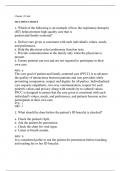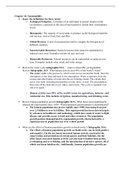Exam (elaborations)
Test Bank for Wilkins' Clinical Assessment in Respiratory Care, 9th Edition by Al Heuer
- Course
- Institution
Test Bank for Wilkins' Clinical Assessment in Respiratory Care, 9th Edition 9e by Al Heuer. Full Chapters test bank are included - Chap 1 to 21 (Complete test bank) 1. Preparing for the Patient Encounter 2. The Medical History and the Interview 3. Cardiopulmonary Symptoms 4. Vital Signs 5. F...
[Show more]





